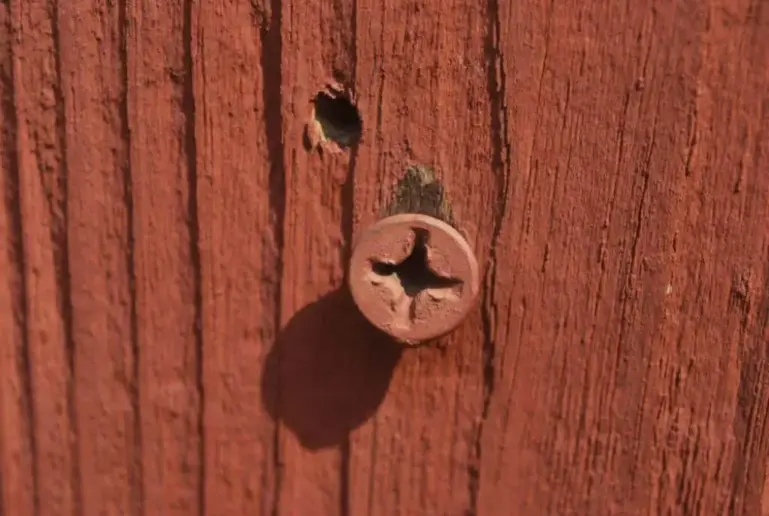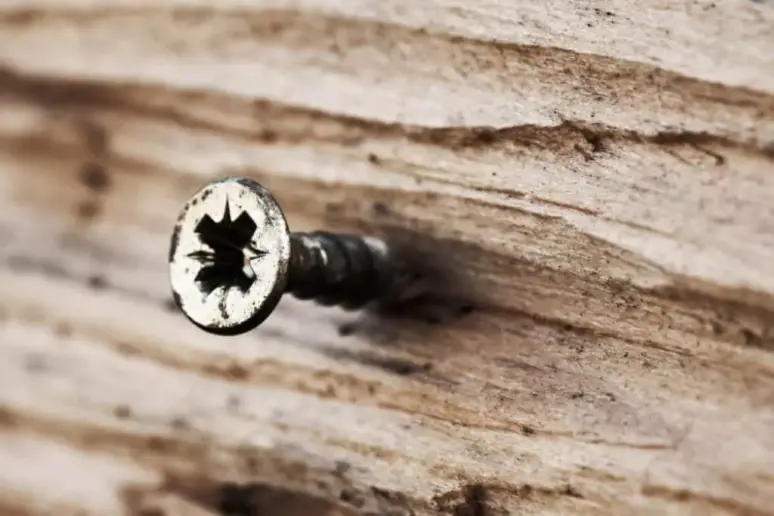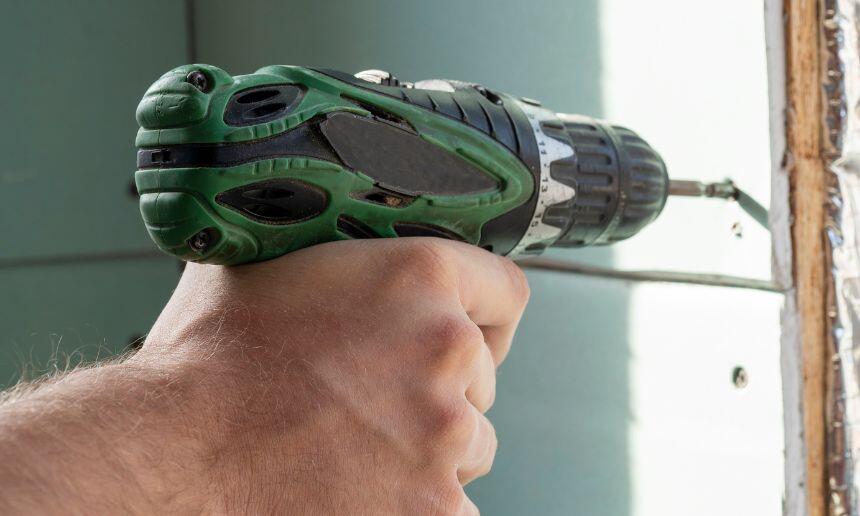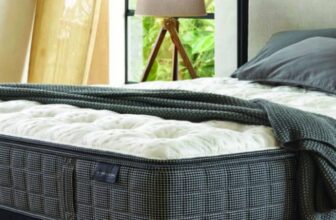Can You Reuse Screw Holes? (In-Depth Guide)
It’s probably impossible to count how many screws there are in every home.
Even though we pay much attention to them, once we screw them into the wall or wood panel, these little guys do tremendous work in keeping the house together.
They hold TV sets, paintings, mirrors, cabinets, shelves, and numerous other pieces of furniture.
None of these things is light, and the screws holding them also have to handle the weight of everything we put on these elements.
Over time, screws will inevitably get loose, for various reasons, which is the point when you’ll want to replace them.
Also, once you’ve lived in the house long enough, you may move some stuff around, leaving some of the screw holes unused.
This doesn’t mean you won’t need them again in the future.
So, you probably wonder can you reuse screw holes, and is it safe to do that?
Can You Reuse Screw Holes In Wood?

A lot of movement and the heavy load screws have to carry can often cause the wood fibers to tear up and strip, losing the threads that hold the screw tightly in the hole.
This can also happen if you drive the crew with too much force, overtightening it as it goes into a hole.
When something like this happens, it’s important to know whether you can reuse these holes or you have to drill new ones, which can cause some problems, both concerning functionality and aesthetics.
Whether you can reuse screw holes mainly depends on the degree of damage to the hole.
In some cases, screw holes in wood can be safely reused. You should first check if the new screw fits tightly and snuggly.
If this is the case, you can freely use the existing hole without any fixing or intervention on your part.
How To Reuse A Screw Hole In Wood?

Often, simply using a new screw won’t work, especially when the hole has been stripped or enlarged.
In many cases, drilling a new hole won’t solve your problem, either.
Some wood projects require screws to be evenly spaced and sometimes the original hole will remain visible ruining the visual appeal.
Fortunately, this is not a hopeless situation. There are a couple of solutions that can help you reuse the original screw hole.
Some are rather simple and need almost no time or effort, while others are a bit more complex and will require some tools and knowledge.
Which one you will use will depend on the degree of damage to the hole, the type of wood, and your own woodworking abilities.
Below are a couple of handy tips and tricks on how to make the screw hole usable again.
Using Bigger Screws
By bigger screws here, I mostly mean wider.
Although sometimes, you can fix the issue by just using the longer screw whose extra length and additional threads will cut in the wood at the back of the hole.
Still, screws with a larger diameter are a safer bet and more likely to solve the problem.
And, in some cases, you can go with screws that are both longer and wider than the original ones.
The new screws should be coarser and more aggressive than the ones that were previously used for that hole.
This means that they should have fewer threads per inch and a higher thread angle. This will allow them to bite into a fresh wood and provide a tight grip.
It’s important to remember not to use screws that are too big or not to be too aggressive and forceful when driving the new screw into the hole.
This may damage the hole further and cause the wood to crack.
Using Toothpicks Or Matchsticks
This is a fairly easy and simple method of fixing stripped screw holes.
First, thoroughly clean the hole, so there are no loose wood fibers left inside. Then, take a couple of matchsticks or toothpicks and lightly soak them in wood glue.
Of course, if you’re using matchsticks, remember to remove their heads.
Next, put the prepared sticks into the hole and gently tap them with the hammer until you feel they fit snuggly and the hole is completely full.
Once you’ve done this, leave them to dry for a few hours.
When they’re dry, use the chisel to snap off excess parts of sticks so they’re flush with the surface of the wood, and drill a smaller pilot hole.
Now, all that’s left to do is insert the screws back in the hole. Depending on the size of the hole, you can also use a hardwood plug or dowel.
Using Repair Kits
Another way to deal with stripped screw holes so you can use them again is with repair kits.
You can easily purchase these online or find them at your local hardware store.
Most of them feature a plastic anchor for the screw threads to grip to and glue to connect it to the hole.
This is a very quick and simple solution that doesn’t require any previous woodworking experience.
However, it doesn’t always work and is more expensive compared to other methods.
Can You Reuse Screw Holes In Drywall?

In most cases, you won’t be able to just simply reuse screw holes in the drywall.
At least not without applying some of the techniques to provide a tighter grip for the screw.
Usually, people tend to patch the old screw holes using spackle paste, also known as “mud” or drywall joint compound.
This works perfectly well for aesthetic purposes as it covers the hole nicely.
However, if you need to reuse that hole and insert a new screw into it, the mud filling will not be able to hold it.
As you drive a screw into it, the joint compound will likely pulverize and shatter, losing the tightness necessary for the solid grip.
Nevertheless, there are a couple of techniques that can help you safely reuse the screw hole in drywall.
How To Reuse A Screw Hole In Drywall?
The various levels of damage to the screw holes in the drywall will dictate the solution to this problem.
The more severe the damage, the more complex the way to fix it will be.
Below, I’ll list a couple of useful techniques that will ensure the screw grips tightly and stays in place when reusing the screw holes in drywall.
Using A Wall Anchor
Most home improvement stores carry at least a couple of different types of wall anchors.
It’s important to find the anchor that is specifically intended for use on drywall.
Otherwise, you may end up making much more damage to your drywall than just one little hole.
Also, you’ll need to make sure that you’re using screws that are right for that type of anchor, not too long and not too short.
Wall anchors are fairly easy to use. First, you have to drill through the original hole to make the pilot hole of the anchor.
Then, gently tap the anchor inside the hole with a hammer. If you feel that the hole is too small, you can use the drill to expand it a bit.
Once the anchor is in place and tightly gripping the drywall, simply drive the screw inside.
Using Toggle Or Molly Bolts
If you can’t get anchors to work, usually due to the size of the hole, you can try the toggle bolts.
Toggle bolts come in sets with a screw and a toggle and are very easy to install. You simply fold the spring-loaded wings and insert them into the hole.
Drive the screw in until the wings unfold and brace against the back side of the drywall and then tighten the bolt.
Molly bolts are installed in a pretty much similar way but they can’t hold a load that heavy.
Patching
In case the drywall around the original hole is too damaged to fit wall anchor, toggle, or molly bold snuggly, you can patch it with another piece of drywall.
This involves cutting out the damaged area of drywall and replacing it with a new piece. This is not the easiest method and will require some experience or professional help.
It will also require repainting the drywall to make sure that the new patch doesn’t stand out.
However, it will provide a very durable solution as you will be inserting a screw into a brand new piece of drywall.
Alternatively, you can go with a simpler technique which is attaching the board over the damaged portion of drywall.
As this is the least visually attractive solution, it is best used in the areas of drywall that are hidden from sight.
Conclusion
Having loose screws is not only impractical but also very unsafe.
A screw that has lost its grip on wood or drywall can cause whatever it’s holding to fall apart or fall down which can lead to costly damage and cause serious injuries.
However, wear and tear and loosening of the screws are more or less inevitable and will likely happen at some point.
That’s why you should learn how to reuse the screw holes and ensure that the new screws have a tight grip and fit snuggly into their holes.
In most cases, the way to do this is rather simple and you can do it yourself.
It’s always best to first try the simplest solution and work your way up to more complex repairs if needed.



















































































